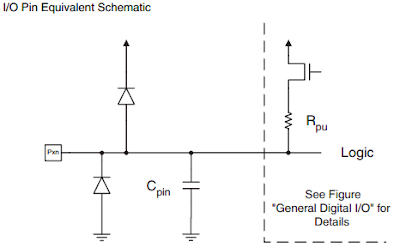Consider a scenario where two microcontrollers are connected using UART. Assume that one microcontroller is powered ON and the other one is powered OFF. You might be surprised to see that the microcontroller that is powered OFF might be powered ON. This is due to injection current that flows into the microcontroller that is powered OFF.
Injection current is defined as the current that is being forced into a pin of an IC by an input voltage that is applied higher than the positive supply of that IC or lower than ground potential. The pins can be a any for example, GPIO, ADC or UART pins. The main reason for this current to flow are the input protection diodes on the pins turning ON due to external potential. The current flows through the input protection diodes. This is the primary reason why all the input voltages applied on the pins would be limited to the supply voltages. We have to check the datasheet specification to find by how much level the external voltage can exceed the supply voltage.
Here is a snapshot of the I/O current injection characteristics from the STM32 datasheet:







0 Comments